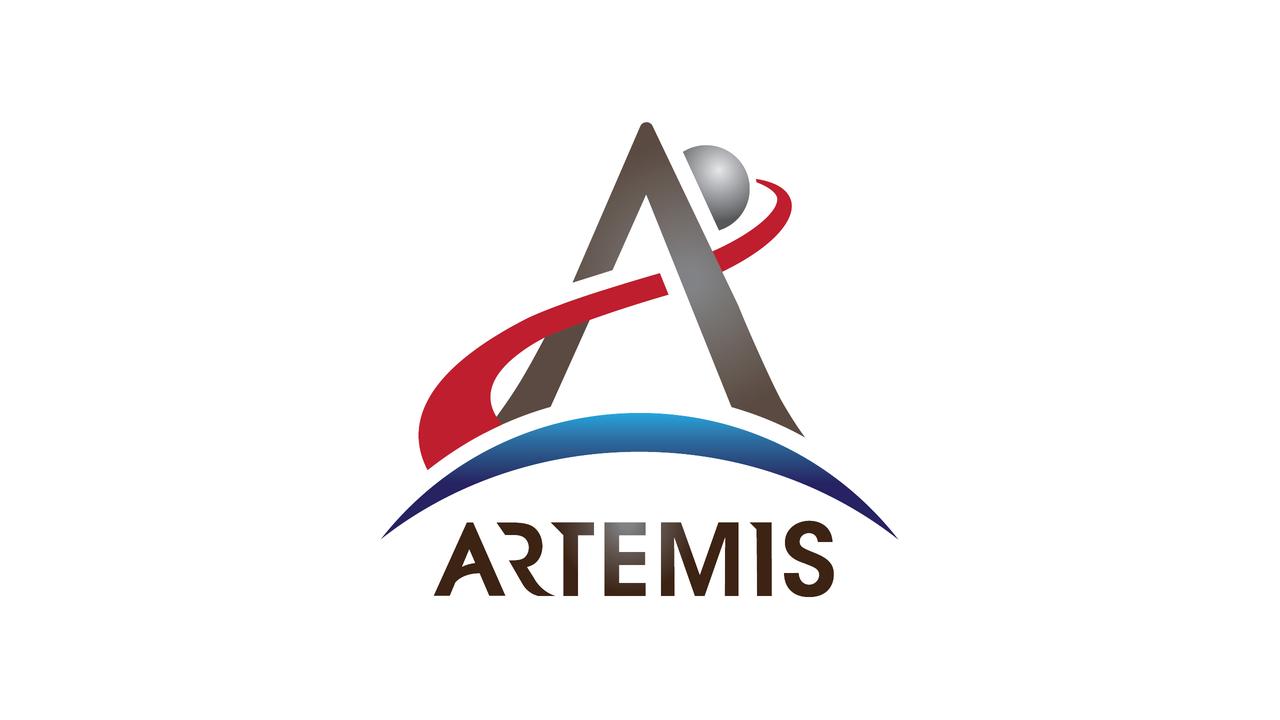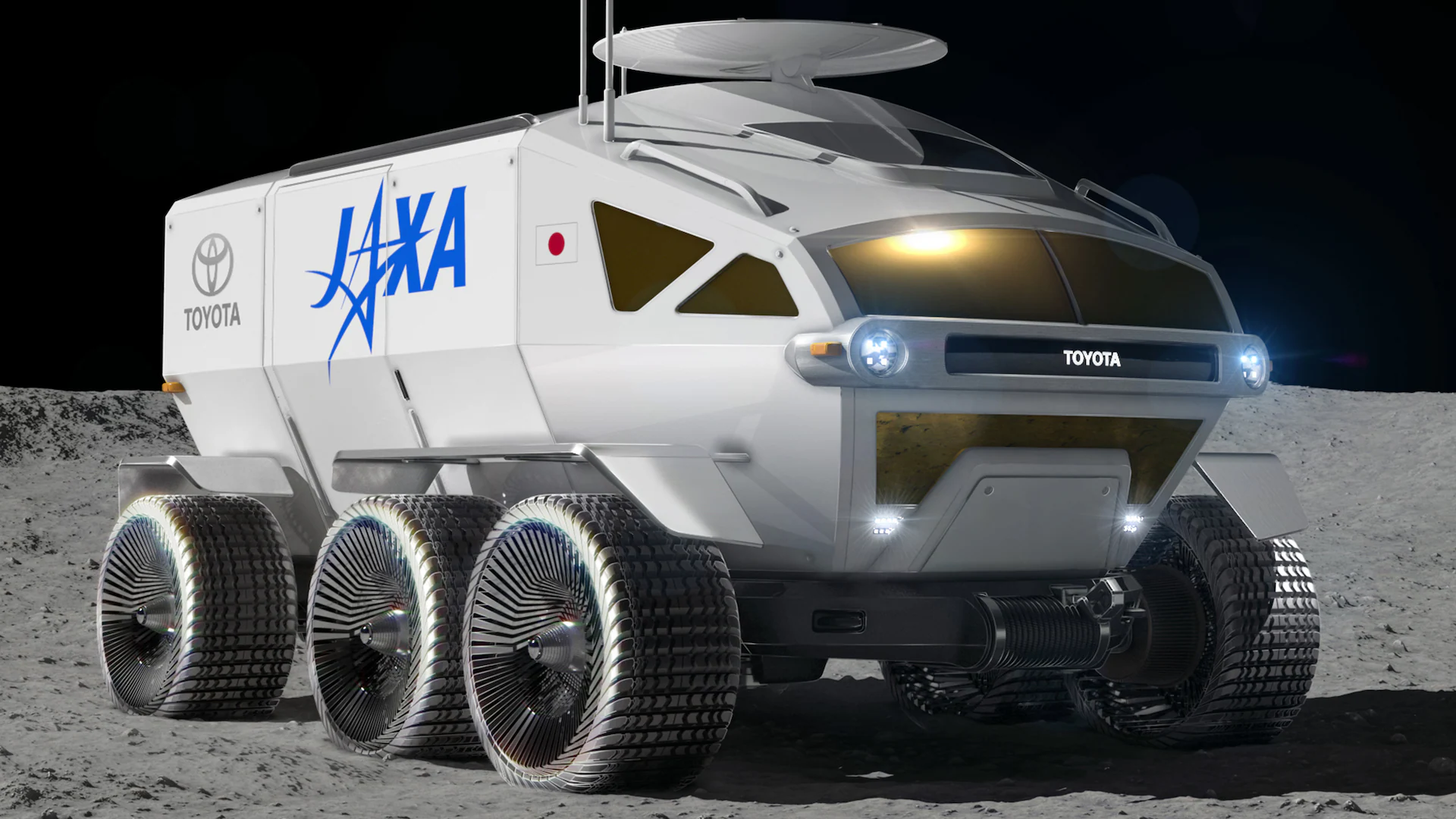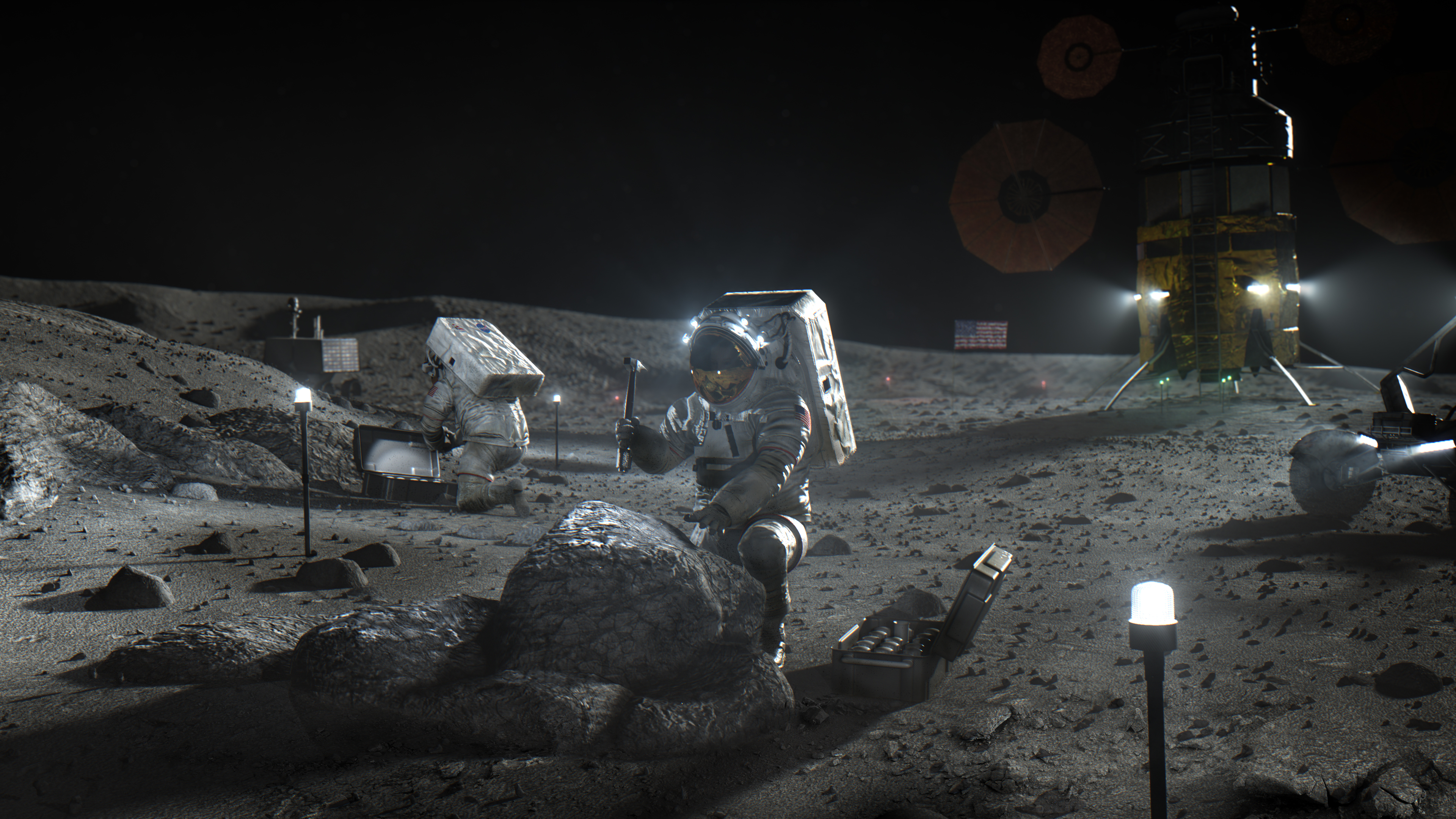| Explore | ||
|---|---|---|
| European Space Agency | National Aeronautics and Space Administration | |
The Artemis program is a Moon exploration program led by the United States' National Aeronautics and Space Administration (NASA), formally established in 2017 via Space Policy Directive 1. It is intended to reestablish a human presence on the Moon for the first time since the Apollo 17 mission in 1972. The program's stated long-term goal is to establish a permanent base on the Moon to facilitate human missions to Mars.

Read more about Artemis on the official NASA Website
Orion is a class of partially reusable spacecraft to be used in the Artemis program. The spacecraft consists of a Crew Module (CM) space capsule designed by Lockheed Martin and the European Service Module (ESM) manufactured by Airbus Defence and Space. Capable of supporting a crew of six beyond low Earth orbit, Orion is equipped with solar panels, an automated docking system, and glass cockpit interfaces modeled after those used in the Boeing 787 Dreamliner. It has a single AJ10 engine for primary propulsion, and others including reaction control system engines. Although designed to be compatible with other launch vehicles, Orion is primarily intended to launch atop a Space Launch System (SLS) rocket, with a tower launch escape system.
The Lunar Cruiser is being developed as a part of NASA's Artemis program and will enable astronaut crews to take trips across the Moon lasting up to 30-45 days, living independently from the station by using its life support system as a backup. Named after the Toyota Land Cruiser, its name was chosen "because of the familiar feeling it offers the people involved in the development and manufacture of the vehicle prototype as part of the joint research project as well as the familiarity it will provide the general public." The rover is currently being manufactured, with an expected launch date in the latter half of the 2020s. The rover itself will use fuel-cell electric-vehicle technologies. An update by the development team in late 2023 indicated the very first cruiser would be deployed in 2029 along with the first moonbase.

As of February 2020, a lunar stay during a Phase 1 Artemis mission will be about seven days and will have five extravehicular activities (EVA). A notional concept of operations, i.e., a hypothetical but possible plan, would include the following: On Day 1 of the stay, astronauts touchdown on the Moon but do not conduct an EVA. Instead, they prepare for the EVA scheduled for the next day, in what is referred to as "The Road to EVA".
On Day 2, the astronauts open the hatch on the Human Landing System and embark on EVA 1, which will be six hours long. It will include collecting a contingency sample, conducting public affairs activities, deploying the experiment package, and acquiring samples. The astronauts will stay close to the landing site on this first EVA. EVA 2 begins on Day 3. The astronauts characterize and collect samples from permanently shadowed regions. Unlike the previous EVA, the astronauts will go farther from the landing site, up to 2 kilometers (1.2 mi), and up and down slopes of 20°.
Day 4 will not include an EVA, but Day 5 will. EVA 3 may include activities such as collecting samples from an ejecta blanket. Day 6 will have the two astronauts deploy a geotechnical instrument alongside an environmental monitoring station for in-situ resource utilization (ISRU). Day 7 will have the final and shortest EVA. This EVA will last one hour, rather than the others' six hours in duration from egress to ingress, and mostly comprises preparations for the lunar ascent, including jettisoning hardware. Once the final EVA is concluded, the astronauts will return to the Human Landing System and the vehicle will launch from the surface and join up with Orion/Gateway.
